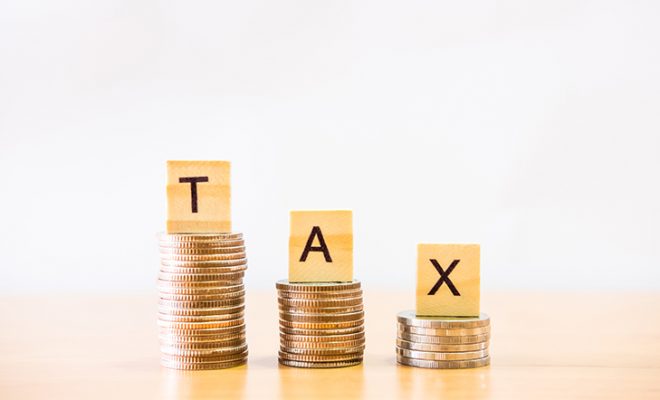What are the Consequences of Not Taking a Required Minimum Distribution (RMD) in Retirement?

While traditional retirement accounts like the traditional 401(k), traditional Individual Retirement Account (IRA), SEP IRA, SIMPLE IRA, etc., offer tax advantages and help you save in a disciplined way, they come with strict rules. One key rule to remember is Required Minimum Distributions (RMDs). Once you reach a certain age, you are legally required to start withdrawing a portion of your savings each year, known as RMDs. Ignoring this rule can lead to penalties and tax consequences.
A financial advisor can help you understand these rules. This article also will break down exactly what happens if you don’t take your RMDs and what you can do to ensure your savings are secure.
Understanding RMDs and the consequences of not taking your RMDs on time
One of the most important rules of tax-advantaged retirement accounts is the RMD rule, which mandates that all account owners must start withdrawing a specific amount from the account each year once they reach a specific age. RMDs are the minimum amounts that must be withdrawn from certain retirement accounts annually. The rules apply to owners of traditional IRAs, SEP IRAs, SIMPLE IRAs, and most workplace retirement plans, including traditional 401(k)s and 403(b)s. Roth IRAs, on the other hand, do not require RMDs during the owner’s lifetime.
If you have multiple 401(k) accounts, each one has its own RMD, and you must calculate and withdraw the correct amount separately from each account. You cannot combine them and have to take the required amount from each individual 401(k). IRAs, on the other hand, offer more flexible rules. You still need to calculate the RMD for each IRA separately, but you are allowed to withdraw the total amount from any one or combination of your IRAs. For example, if one IRA requires $1,000 RMD and another requires a $4,000 RMD, you can withdraw the full $5,000 from just one account. You can also split it between both accounts, as long as you withdraw at least $5,000 in total before the deadline.
The exact RMD amount is based on your account balance as of December 31 of the previous year and a life expectancy factor determined by the Internal Revenue Service (IRS). You can refer to the official IRS Tables for more information. The IRS provides different tables to calculate RMDs based on the account owner’s situation, as explained below:
- Uniform Lifetime Table: Applies to account holders who are either unmarried or married to a spouse who is no more than 10 years younger and whose spouses are not the sole beneficiaries.
- Table I (Single Life Expectancy Table): Used for beneficiaries who inherit an IRA and are not the spouse of the deceased owner.
- Table II (Joint Life and Last Survivor Expectancy Table): Applies to IRA owners with spouses who are more than 10 years younger and designated as the sole beneficiaries.
When do I have to take my RMD?
As of 2025, you can start taking your RMDs starting the year you turn 73. For example, if you turn 73 in 2024, your first RMD must be taken by April 1, 2025. The amount for the RMD is calculated based on your retirement account balance as of December 31, 2023. Your second RMD will be due by December 31, 2025, based on your balance at the end of 2024. While it is possible to withdraw more than the required amount, taking less or skipping the withdrawal altogether comes with financial consequences, such as taxes and penalties.
Penalty for not taking RMDs
Every retirement account holder must withdraw their RMD each year. If you miss your withdrawal or withdraw less than the mandated value, the IRS imposes a 25% excise tax on the amount that should have been withdrawn but wasn’t. For example, if your RMD for the year is $12,000 and you do not withdraw it, you could owe a penalty of $3,000.
The IRS provides a chance to correct this mistake. If the missed RMD is withdrawn within two years, the penalty drops to 10%. In this case, instead of paying $3,000, you would owe $1,200. While you can lower the penalty, you still have to pay some of it, which can be a financial setback in retirement. Hence, it is advised to draw your RMDs on time.
What happens if the account holder dies before taking RMDs?
RMD rules also apply to retirement account beneficiaries. If a 401(k) or IRA owner dies after December 31, 2019, the rules for withdrawing the remaining account balance depend on who inherits the account. In most cases, the entire balance must be withdrawn within ten years of the original owner’s death. This applies whether or not the account holder has already started taking RMDs.
However, there are exceptions for certain beneficiaries. If the account is inherited by a minor child, a surviving spouse, a disabled or chronically ill individual, or someone who is less than ten years younger than the original owner, they are not required to follow the 10-year rule. Instead, they can stretch out withdrawals over their lifetime. This allows smaller distributions over the years and minimizes tax burdens for the inheritor.
For beneficiaries who do not qualify for an exception, failing to withdraw the full balance within ten years can lead to penalties. The IRS requires the funds to be fully distributed by the end of the tenth year following the original owner’s death. The penalty for not taking an IRA distribution on time is a 25% excise tax.
SPONSORED WISERADVISOR
Exceptions to the required minimum distribution penalty
1. If you are not retired yet and do not own more than 5% of the company
Employees covered by a qualified retirement plan might be eligible to delay RMDs until April 1 of the year after they leave the workforce without facing a penalty. This exception allows them to postpone withdrawals until they retire rather than starting at age 73. However, it does not apply to everyone. Business owners with a 5% or greater stake in the company sponsoring the plan must still begin RMDs at 73, regardless of whether they continue working.
2. If you delay the first RMD
You can delay your first RMD after turning 73 until April 1 of the following year. However, this only applies to the first RMD. You would have to take the next RMD, along with the first one later. This would require taking two distributions in the same tax year, which could significantly impact your taxable income.
3. If you are using IRA funds for charity
IRA owners can claim another important exception through charities. They can donate directly from their IRA to a qualified charity using a Qualified Charitable Distribution (QCD). These donations, up to a set limit each year, are completely tax-free and qualify as RMDs once the account holder turns 73. Here’s how it works:
Normally, withdrawals from a traditional IRA are taxed as ordinary income. However, if an IRA owner donates funds through a QCD, the withdrawals are excluded from their taxable income. For those who are already required to take RMDs, a QCD offers an extra advantage as it counts toward their RMD for the year while helping them fulfill their philanthropic endeavors. So, if an IRA owner is required to withdraw $10,000 as an RMD but donates that amount directly to charity through a QCD, they will not owe taxes on it. The IRS sets limits on how much can be donated through a QCD. In 2024, an individual could give up to $105,000 tax-free, while a married couple, if both spouses qualify and have IRAs, can donate up to $210,000. These limits have increased in 2025, with individuals able to contribute up to $108,000. The new married couple limit will be even higher at $216,000. However, to qualify, the donation must go directly from the IRA to an eligible charity.
4. If you are a beneficiary
Beneficiaries of inherited retirement accounts are required to take RMDs within ten years, but the specific rules depend on the type of beneficiary. Certain beneficiaries, known as eligible designated beneficiaries, are exempt from the 10-year rule and can continue withdrawing based on their own life expectancy. This includes spouses, minor children, and disabled or chronically ill inheritors. It also includes inheritors who are less than 10 years younger than the account holder.
What should you do if you miss your RMD?
1. Correct your mistake within two years
The moment you realize you have missed the RMD, correct your mistake. The IRS imposes a 25% excise tax on the amount you failed to withdraw. However, if you correct the mistake within two years, the penalty is reduced to 10%, which helps lower your financial burden.
To fix the issue, calculate the value of the required minimum withdrawal from your IRA or other retirement accounts and withdraw it as soon as possible, within two years. In this case, your penalty will be lowered by 15%.
2. Submit Form 5329 and request a waiver
If you miss taking your RMD from a qualified retirement account, you must file Form 5329. This form is used to report the missed RMD and calculate any penalties owed. Along with the form, you should submit a written explanation detailing why you failed to take the distribution on time and why you believe the IRS should waive the penalty. The IRS may consider reasons like an illness, a death in the family, etc., grounds for a waiver.
While the IRS does not guarantee approval, they often grant waivers if you can have a reasonable cause and take corrective action by withdrawing the missed RMD as soon as possible. For better guidance on handling missed RMDs, consider working with a financial advisor who can help you file the form on time.
How do you avoid penalties on RMDs?
1. Automate your RMDs
Automating your RMDs can help you avoid IRS penalties and save time. Setting up automatic withdrawals ensures that you take the required distributions on schedule without having to monitor them manually. Even if you forget or get caught up in other responsibilities, your RMDs will be processed automatically, keeping you compliant with the rules and stress-free.
2. Start your withdrawals as soon as you can
For many retirees, the fear of paying taxes is what prevents them from taking distributions. However, avoiding withdrawals does not mean avoiding taxes. Instead, it can lead to penalties, which only makes the situation worse. Planning ahead and taking RMDs strategically ensures you meet IRS requirements while managing your tax burden effectively.
You do not have to necessarily wait till age 73 to draw your RMDs. Starting withdrawals earlier, at the age of 59.5, can help you spread your tax liability over a longer period. A common mistake is waiting until the last minute and paying a higher tax rate on large, lump-sum withdrawals. Taking smaller distributions earlier can help keep your tax rate lower.
3. Convert to a Roth account
You can convert your traditional accounts into a Roth account. Unlike traditional retirement accounts, Roth IRAs are not subject to RMDs. So, you do not have to worry about withdrawing a specific amount each year or facing penalties for missing a deadline. A Roth conversion allows you to transfer funds from a tax-deferred account, like a traditional IRA or 401(k), into a Roth IRA. You will owe taxes on the converted amount in the year of the rollover, but once inside the Roth IRA, the funds can grow tax-free, and there will be no mandatory withdrawals in retirement. This can help you enjoy penalty-free withdrawals whenever you want and leave your funds tax-free for your heirs.
4. Keep a list of all your accounts
Keep track of all your retirement accounts to avoid missing an RMD. If you have multiple accounts, ensure you know where each one is and whether it requires a withdrawal. You can either withdraw separately from each account, set up automatic distributions, or consolidate them into a Roth IRA to eliminate RMDs altogether.
To conclude
Understanding the consequences of not taking your RMDs on time is essential to maximize your retirement savings. You spend your entire life working hard to build your nest egg and should not let penalties chip away at it. Knowing the required minimum distribution penalty rules and planning your withdrawals around them can help you avoid unnecessary taxes and fines. Consider discussing your withdrawal strategy with a financial advisor to ensure you are making informed decisions. It is also important to know the key differences between Roth and traditional accounts, as choosing the right one from the start can make future withdrawals much easier.
Use the free advisor match tool to get matched with experienced financial advisors who can help understand RMDs and the consequences of not taking them on time. Answer a few simple questions and get matched with 2 to 3 vetted financial advisors based on your requirements.
For further information on creating a suitable retirement plan for your unique financial requirements, visit Dash Investments or email me directly at dash@dashinvestments.com.
About Dash Investments
Dash Investments is privately owned by Jonathan Dash and is an independent investment advisory firm, managing private client accounts for individuals and families across America. As a Registered Investment Advisor (RIA) firm with the SEC, they are fiduciaries who put clients’ interests ahead of everything else.
Dash Investments offers a full range of investment advisory and financial services, which are tailored to each client’s unique needs providing institutional-caliber money management services that are based upon a solid, proven research approach. Additionally, each client receives comprehensive financial planning to ensure they are moving toward their financial goals.
CEO & Chief Investment Officer Jonathan Dash has been covered in major business publications such as Barron’s, The Wall Street Journal, and The New York Times as a leader in the investment industry with a track record of creating value for his firm’s clients.











